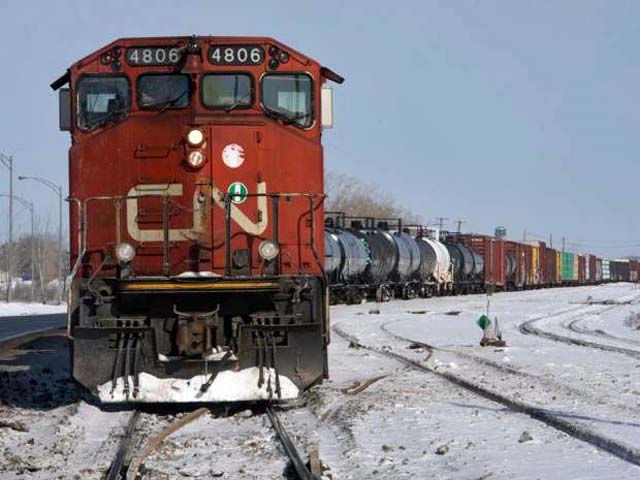
Ottawa Ontario - Transport Canada (TC) plans to regulate emissions from locomotives for the first time, a move forecast to cost the rail industry
$162.3 million over 10 years but reduce emissions by nearly 10 percent.
The government published the details of its proposed regulations Friday in the Canada Gazette.
The goal is to align Canada's standards with the United States as the Liberals seek to reduce emissions from all forms of transportation.
"Aligning locomotive emission standards with the U.S. will provide regulatory certainty for the rail industry and improve the efficiency of the North
American transportation system," Transport Minister Marc Garneau said in a statement.
"Most importantly, these regulations will lead to environmental benefits that protect the health of Canadians and advance green
technologies."
According to the proposal in the Canada Gazette, the rail industry is responsible for 11.1 percent of all nitrogen oxide emissions and 4.6 percent of
particulate matter emissions.
TC's cost-benefit analysis found that the proposed regulations will cost $162.3 million over 10 years but will create benefits worth $244.9 million, including
a 9.3 percent reduction in nitrogen oxide emissions and an eight percent drop in particulate matter emissions.
This doesn't include the potential reduction in healthcare costs.
The move comes as North American railways struggle with declining volumes amid weak commodity prices and subdued consumer demand.
Total North American carloads are down 10.4 percent so far in the second quarter, according to Cowen and Company, led by declines in coal, metals, and
chemicals.
Canadian National Railway (CN) spokesman Mark Hallman said the company will review the proposed regulations before commenting on them, but added that CN and
the industry as a whole have done "much on their own to reduce the carbon footprint of rail operations."
CN has achieved a 36 percent improvement in fuel and carbon efficiency over the past 20 years based on fuel consumption per 1,000 gross ton miles, Hallman
said.
"CN also continues to lead the rail industry in fuel efficiency, consuming 15 percent less fuel per gross ton mile than the industry average," he
added.
Canadian Pacific Railway (CP) did not immediately respond to a request for comment.
The government suggested railways could pass on at least some of the costs of compliance to shippers, adding that this should not "have a significant
impact on business and consumers."
It also said it would provide flexibility for small railways with revenues of $30 million or less.
Under the existing U.S. regulations, emissions standards vary by the type of locomotive and the year it was originally manufactured.
The proposed rules would require railways to conduct regular emissions tests and cut down on the amount of time spent idling.
Kristine Owram.


